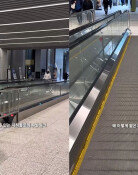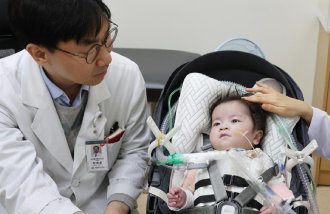Preemptive restrictions in noncapital regions needed to curb COVID-19
Preemptive restrictions in noncapital regions needed to curb COVID-19
Posted July. 13, 2021 07:53,
Updated July. 13, 2021 07:53
On Monday when the notorious Level 4 lockdown was kicked off across the metropolitan areas, the number of confirmed cases of COVID-19 reached 1,100, setting up a new Monday record. This is the first that the amount of infection cases surpassed the mark of 1,000 for six consecutive days since the coronavirus broke out in South Korea. With the share of patients from non-metropolitan areas gradually increasing to 27.1%, the disastrous possibility is resurfacing of the fourth wave of coronavirus raging across the entire country.
The number of newly confirmed cases in non-capital areas is around 300 a day, jumping almost threefold from 112 on July 1. With the cases mushrooming sporadically from daycare centers, pubs, factories, and companies, the intensity of contagion in non-metropolitan areas is being fueled further by urban visitors on summer vacation. On Jeju Island, for instance, four out of the 10 new infection cases were from other regions including the metropolitan parts of the country. Following Busan and Daejeon, Jeju and Southern Chungcheong Province dialed up the intensity of lockdown measures to Level 2 on Monday.
But it is questionable whether such measures will suffice to prevent the virus spreading across the country. Under Level 2, gatherings of up to 8 people are allowed, and restaurants and bars can operate until midnight. And most other parts of the country barring those cities mentioned above are enjoying Level 1, which imposes no restrictions on the number of gathering or business hours, likely prodding those in metropolitan areas into traveling there in search of lockdown haven.
According to Korea Expressway Corporation, as many as 730,000 vehicles escaped the Seoul metropolitan area during the last weekends, up 30,000 from a week earlier. The accommodation facilities near popular tourist spots are already fully booked. If the spread is not properly curbed over the next two weeks, it will sap the medical manpower meant to be mobilized for the general vaccination campaign for 21 million people later this month. Intensifying lockdown measures for non-capital areas should come first to control the full-blown contagion in steady hands.
In addition, treatment centers for patients with minor symptoms are on the verge of saturation owing to a surge in patients in their 20s and 30s, provoking a domino effect of the lack of hospital beds. While the government claims it has secured enough beds, cases abound where a patient from Gyeonggi Province is transferred to the Chungcheong region or all the way down to Daegu, a 10-hour drive back and forth. In other cases, patients are forced to wait three or four days before being hospitalized even after they were diagnosed with a coronavirus infection. The tallies from non-capital regions are on the rise, and the Delta variants are traveling at a threatening pace. It is imperative that we secure enough hospital beds, manpower and vehicles to transfer patients fast and safe.







